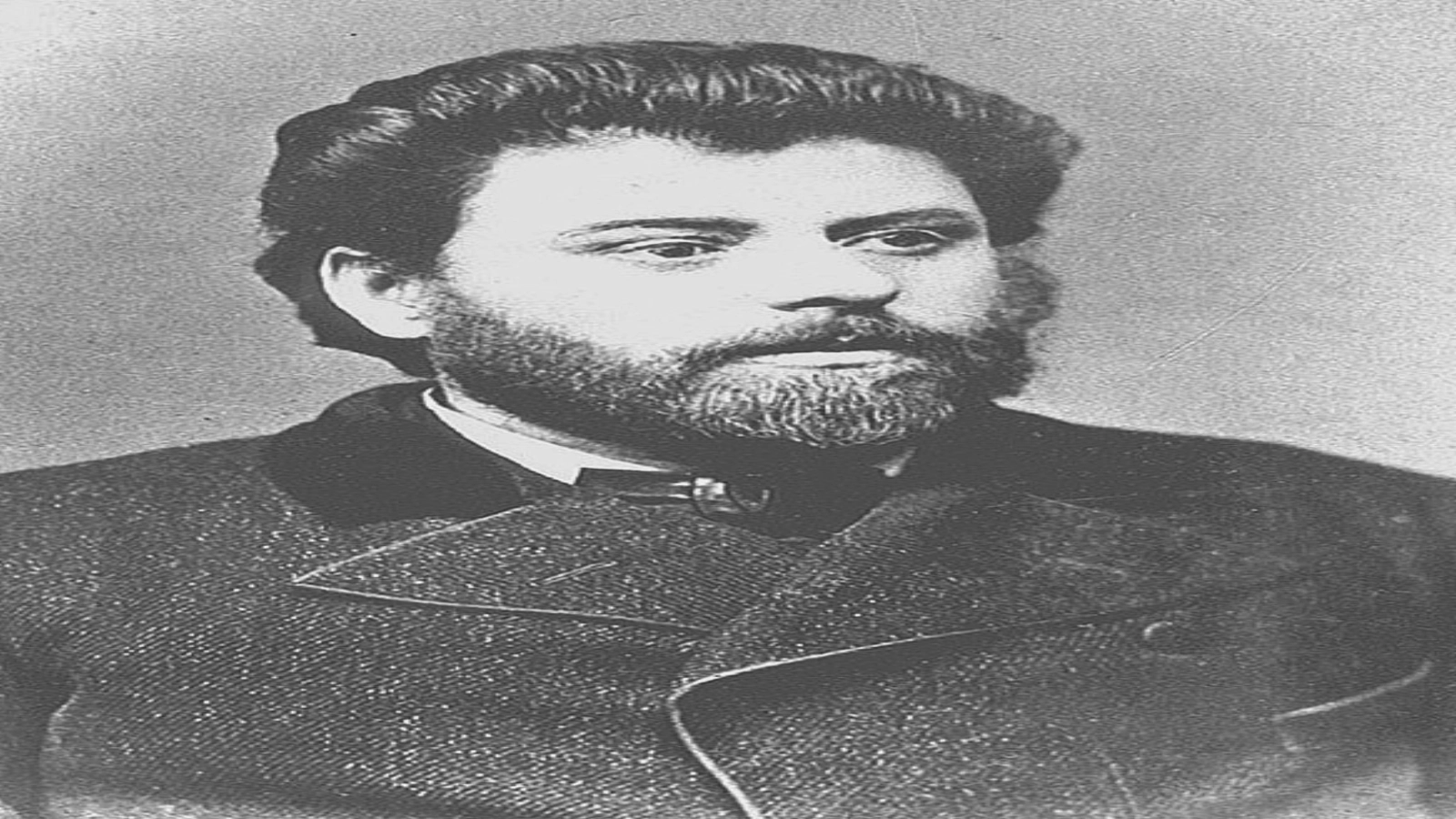Known for his work that encaptured the childhood of many generations, Ion Creanga will forever be remembered through the heroes he gave life to in his stories.
In order to meet the great storyteller from Humulesti and to get to know the atmosphere of the time he lived in and one can now visit the Memorial Museum that bears his name, located in Humulesti, Neamt County, says Renata Gabriela Buzau, museographer within the Neamt National Museum Complex.
The house where the "close friend" of poet Mihai Eminescu, who was also one of the most animated members at the meetings of the legendary "Junimea" literary circle in Iasi, grew up - says museographer Renata Gabriela Buzau - was built around 1830 by Petrea Ciubotariul, Ion Creanga's grandfather. Like most houses, regardless of the geographical area, this one too was built considering many factors, like: the location, position and certain technological aspects like choosing the building materials, the balance between size and functionality, insulation against soil moisture, preserving the local architectural specificity.
"Although there is no information on what the house actually looked like in the first half of the 19th century and given that some gaps in the organization of the space persist as a result of a number of changes over time, the variety of documentary sources (ethnographic, literary and archival) has allowed specialists to clarify some lesser-known aspects of the possible previous looks of the building, a historical monument in which one of the most beloved and open representatives of Romanian modern classical literature lived. Thus, according to those who studied the work of Ion Creanga, his family's home was representative of the traditional architecture of the time, without impressing by shape, size or structure, fitting into a certain pattern, as a result of a strong conservatism, specific to the rural environment," museographer Renata Gabriela Buzau told AGERPRES.
Made of wood, clay and stone, in various proportions and according to needs, the building has three rooms. According to the testimonies left by the "passionate member of the Junimea literary circle" Creanga and the descriptions that we have from the first half of the 20th century, the house had a pantry that allowed access into the attic, a porch with a hearth and a chimney, while the living room was the main space of the house. traditional, which is why it was larger than the other two. In addition, "here, the blind stove and the winter oven were heating it from the hearth in the porch."
"The home of the Creanga family kept the memory of the writer from Humulesti untouched even after he passed away, thanks to the initiatives of the local community to honour in that place the memory of the lively narrator, through commemorative cultural activities. Such an event took place in Humulesti in December 1909, under the direct coordination of teacher Neculai Bancea, on the occasion of the 20th anniversary of the death of Ion Creanga. Another event took place on March 1, 1937, marking the centenary of the birth of the writer who left us the well-known book 'Amintiri din copilarie' [Childhood Memories - editor's translation], a large event was held at the house where the honoured personality lived his childhood. This is also confirmed by photographs from the collection of the Museum of History and Ethnography in Targu-Neamt, made on both occasions in front of the house of the one who is considered one of the illustrious figures of the 19th century Romanian literature," says Renata Gabriela Buzau, Agerpres.ro informs.
According to the museographer, the year 1937 also marks other significant moments, such as the establishment of the "Ion Creanga" Cultural Centre in Humulesti and the opening of a small museum that included more than 200 pieces, some of great value, such as Creanga's watch, the pillar of the chimney, the staircase, the writings and signatures of the great storyteller."
"Although the museum's collection dedicated to the writer was not arranged in his family's home, but at the school in his native village, the initiative was a first step in recognizing the merits of the man who enriched modern classical literature with his work. The official inauguration of the museum took place on May 7, 1939. The following month, the museum was visited, on June 20, 1939, by the Grand Duke Mihai de Alba Iulia and his colleagues from the Palace, on the occasion of a study visit to Maramures and Moldova, after completing the high school courses: 'The Grand Duke visited [...] the 'Ion Creanga' museum, where it was once the primary school where I. Creanga and Smarandita met St. Neculai, the miracle worker that was hanged on a wall.' From here, the heir to the throne of Romania and the royal suite headed to the house of the writer in Humulesti, the proof of their presence in Neamt county being the note that the future king left in the book of impressions," said the museographer.
During the Second World War, as a result of the stabilization of the front line near Targu-Neamţ, all the cultural assets in the museum were transferred to the Agapia Monastery, and many of them were destroyed due to the disorders caused by the Soviets.
After 1944, the house where one of the most spiritual members of the "Junimea" literary circle lived was donated by Sofia Grigoriu, his niece, to the General Association of Romanian Teachers, and arrangements were made for the building to be restored as a historical monument, as a museum, but not before carrying out significant works to allow its introduction into the museum circuit.
"We can only talk about the functioning of a museum arranged inside the house where Ion Creanga lived since 1951, the purpose of establishing this cultural institution being, on the one hand, to perpetuate the work and the story of the author's life and, on the other hand, to promote the ethnographic value of the home that paints a vivid, authentic image of the lifestyle, occupations and crafts practiced in the world of the traditional village in the 19th century. The Ion Creangă Memorial Museum invites all those "who want to step into a fairytale world to cross its threshold to discover, through the cultural objects displayed, the quiet and modest life, characteristic of the inhabitants of the Neamt county and which contrasts strongly with the agitation and exuberance of the present times," said the museographer, Renata Gabriela Buzau, at the Neamt National Museum Complex.
































Comentează